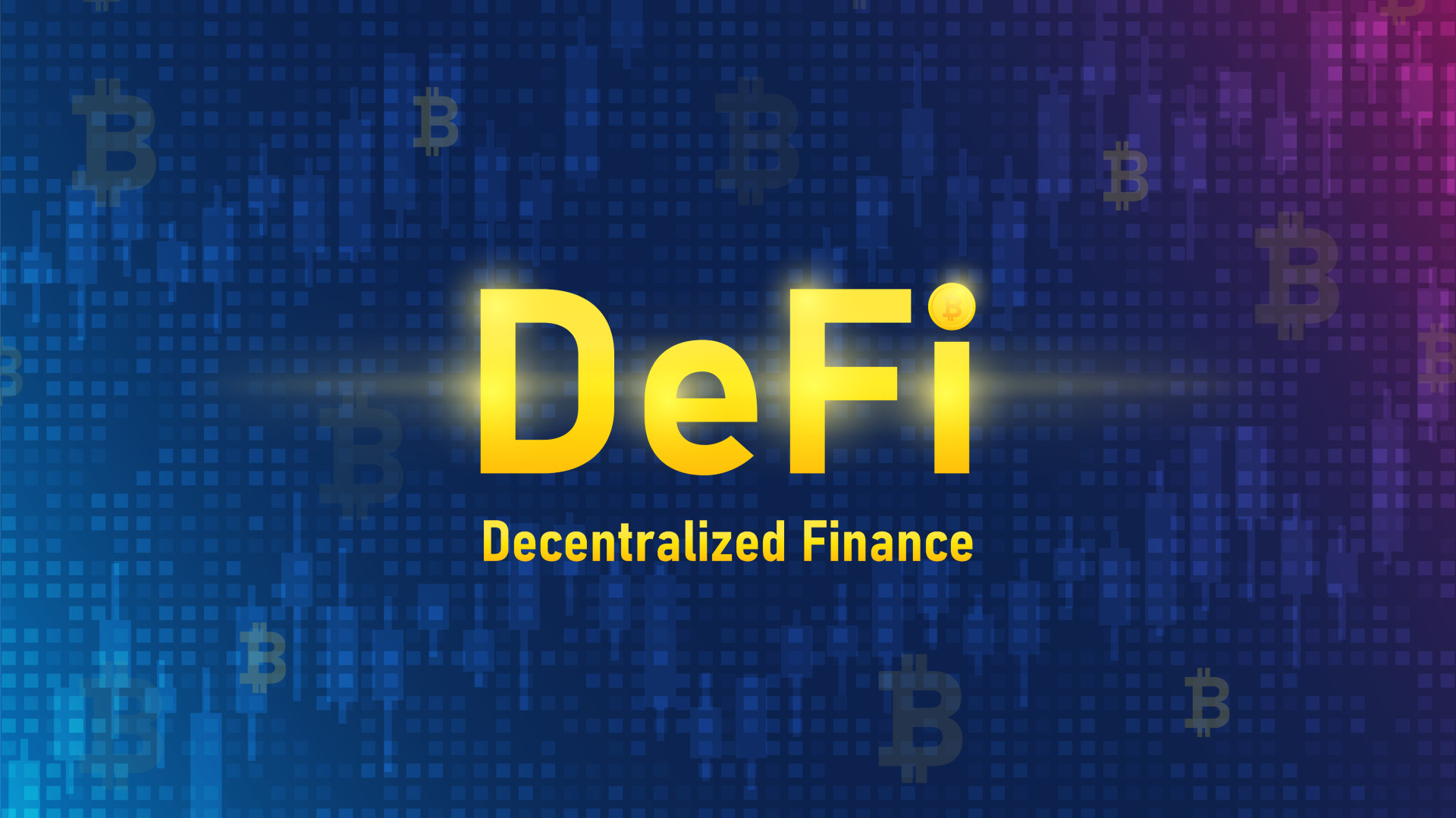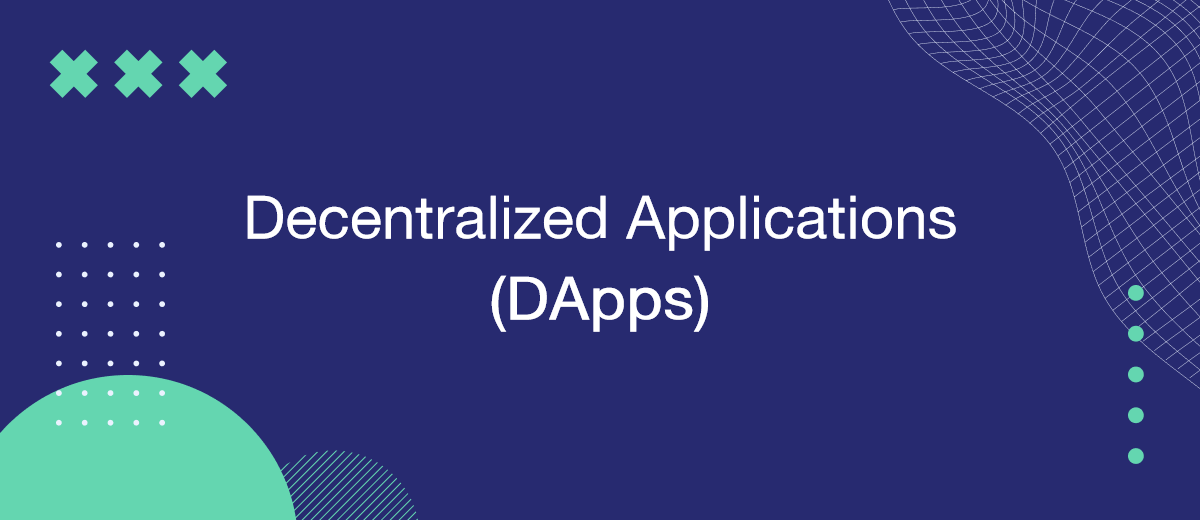The intensive development and spread of blockchain technologies has led to the emergence of decentralized applications (DApps), which have become one of the characteristic symbols of the Web 3.0 era. In this article, we will discuss what these platforms are, how they work, their advantages and disadvantages, and what DApps stands for.
Definition of DApps
Decentralized applications (DApps) are a type of open-source application developed based on a peer-to-peer P2P blockchain network. The main difference between such software and centralized programs is its distributed structure. DApps do not have a single server or other control center, instead they are collectively managed by the entire community of users. In general, they are similar to other types of modern applications (web, mobile or desktop), but the key feature of their functionality is P2P support.
DApps can be called any software whose back-end is implemented via blockchain. The decentralized structure makes these programs more reliable, secure, autonomous and transparent, compared to traditional centralized applications. All information downloaded, transmitted and stored in DApps is recorded in the blockchain and verified by multiple computers participating in the network (nodes). As universal data registries, they are used for various purposes — from financial transactions to multiplayer games and online voting.

For a more in-depth understanding of DApps meaning, it is worth mentioning the most common blockchain technology in this area — Ethereum. The distributed ledger capabilities it provides have become a key factor in the popularization of decentralized applications. Convenience, flexibility, and availability of development tools have made Ethereum the leading platform for developing smart contracts — one of the key components of DApps. As of 2024, ~4,000 applications of various types and purposes have been created based on this blockchain.
How DApps Work
The front-end code of DApps is almost identical to the code of other modern applications and websites. As for the back-end code, it is fundamentally different, as it operates in a peer-to-peer decentralized network. Servers and databases ensure the operability of centralized software, and smart contracts ensure the DApps. Such contracts are a set of pre-written rules that are executed automatically using software scripts. To execute a smart contract, its participants must fulfill all the necessary conditions.
Once a smart contract is launched on the Ethereum blockchain or another distributed P2P network, all community members maintain its functionality. This makes it virtually impossible to destroy or secretly change the program, even if the developers stop servicing it. A smart contract has only a server part and is often a small (but significant) component of DApps. Thus, to create a decentralized application, one or more smart contracts (back-end) and a user interface (front-end) are needed.
DApps rule includes three main attributes:
- Open-source code. The program code of such applications is available for viewing by all its users, and changes to it are possible upon reaching a consensus in the community.
- Decentralized storage. Data is stored not in a centralized database, but in a chain of blocks, which ensures transparency and reliability of the technology.
- Cryptography. Verification of decentralized data blocks by all network participants protects them from unauthorized modification or deletion.
Types of DApps
There are several thousand DApps examples that fall into the following categories:
Based on Consensus Mechanism
The consensus mechanism in the blockchain is used to verify transactions and check their authenticity. Consensus in this case is considered to be the agreement of the transaction by all nodes of the network. One of the most widespread categories of decentralized applications includes three main subgroups:
- Basic DApps. These are projects built on their blockchain, such as Bitcoin or Ethereum. These systems serve as hosting platforms for other applications that use their resources.
- Protocol-based DApps. The second group is developed based on basic DApps and uses a unique token required for the application to operate. One of the most famous examples of such software is the PancakeSwap DEX exchange, which is based on the BNB Smart Chain.
- User-centric DApps. The third group is a type of protocol-based DApps that are built to fulfill specific user needs. This includes many Solana DApps, as well as applications on other blockchains (Ethereum, Polygon, etc.)
Based on the Intended Purpose
The second category also contains many examples of DApps for various purposes: for decentralized finance (DeFi), gaming, marketplaces, privacy protection, supply chain management, content creation, etc.
Among the most widespread of them, we can highlight:
- Lending platforms. Using platforms like Aave or Compound, users borrow and lend crypto assets to each other, earning interest.
- Decentralized exchanges (DEX). Exchanges like Uniswap or Sushiswap allow users to exchange and trade cryptocurrencies without a centralized service.
- Stablecoins. Popular cryptocurrency financial instruments like MakerDAO's DAI also use this technology.
- Staking platforms. DApps include staking platforms like Yearn Finance, which allow users to stake their crypto assets to earn passive income.
- Blockchain games. No less popular type of decentralized applications are numerous gaming projects, such as Sandbox and Decentraland.
- NFT marketplaces. This category of software includes platforms like OpenSea, where users can buy and sell tangible and intangible assets in the form of unique digital tokens (NFT).
Benefits of DApps

Information about what DApps are would be incomplete without describing the key advantages of such platforms:
- Stability and reliability. Decentralization ensures stable and uninterrupted operation of applications, even with a significant decrease in performance. The performance of centralized software directly depends on the state of the server and database, while DApps use a distributed network of resources of all users.
- Autonomy. The use of smart contracts allows DApps to run and perform their functions autonomously in accordance with the protocol. Human involvement in the management and control of this software is not required.
- Transparency and security. DApps have open-source code, which can only be changed by user consensus. All their transactions are also transparent. This makes such systems safe and protected from third-party interference.
- Privacy. Most decentralized applications do not collect personal data of participants, allowing them to remain anonymous.
- Data integrity. All data entered into DApps is recorded in the blockchain, so it cannot be changed or deleted, even by application developers. Blockchain consensus algorithms with block verification guarantee the integrity and authenticity of the stored information.
- Versatility. The flexibility of the Ethereum blockchain and other networks allows the creation of decentralized applications for various areas and tasks — from financial DeFi DApps to voting platforms (DAO) and supply management (VeChain)
- Openness to innovation. DApps are built and managed by a community of stakeholders, which encourages continuous improvements and updates.
Challenges and Limitations
Along with significant advantages, popular DApps also have certain disadvantages, namely:
- Complexity of development. Creating decentralized applications requires developers to have deep expertise in blockchain technology, smart contracts, and consensus mechanisms.
- Difficult to maintain. Any changes and updates to the DApps software code are only possible with the consent of all nodes in the network. This often makes it difficult to maintain and debug such software.
- Difficulty in scaling. Due to decentralization and consensus mechanism, DApps are significantly more difficult to scale than centralized applications.
- Complexity of the interface. Many applications of this type have a very complex and confusing UI, which will be difficult for inexperienced users to understand. For example, authorization in such systems occurs not through a traditional login/password, but through a pair of keys (open and closed).
- Vulnerability to overload. Numerous transactions, users, or other resources regularly overload and slow down DApps or even cause them to crash.
- Illegal use. Decentralization and anonymity make DApps a popular tool for fraud and other illegal activities. The most common ones are Ponzi schemes, phishing platforms for stealing money and data, pump&dump schemes, and exit scams.
Future of DApps
Decentralized applications are an important stage in the evolution of blockchain and Web 3.0 technologies. The openness, reliability, and versatility of these solutions provide them with very promising prospects. According to many experts, the number of types and names of DApps will steadily grow, and their functionality will become more powerful and versatile. Experts believe that this industry is currently at the initial stage of development, so its heyday is yet to come.
As blockchain technology develops, decentralized applications will get rid of their inherent shortcomings, which will contribute to their popularity. It is likely that in the future, top DApps will become the new standard in many areas, and will significantly accelerate digitalization and innovation. It is possible that the principles of decentralization, consensus, and transparency embedded in them will make this software the cornerstone of the developing digital economy.
Conclusion
Decentralized applications (DApps) are considered one of the most popular and promising blockchain technologies. The distributed structure and open-source code provide them with a wide range of advantages, making this software in demand in many areas. In 2024, there are over 4,000 DApps available for various tasks — ranging from lending and online gaming to stock trading and supply chain management. Blockchain applications are also not without some disadvantages, which currently limit their distribution. But in any case, the technology has a great future and can become one of the top key innovations of the Web 3.0 era.
If you are interested in implementing automation and increasing productivity, take a look at our service SaveMyLeads. You don't need any special knowledge. Explore examples of setting up integrations:
